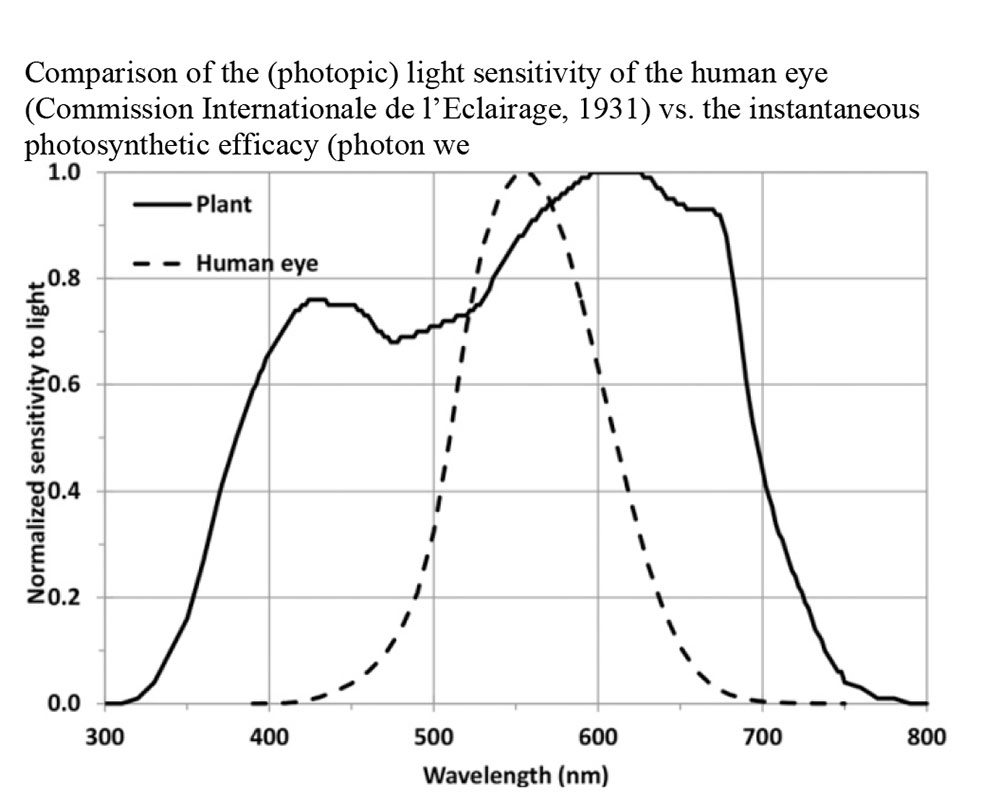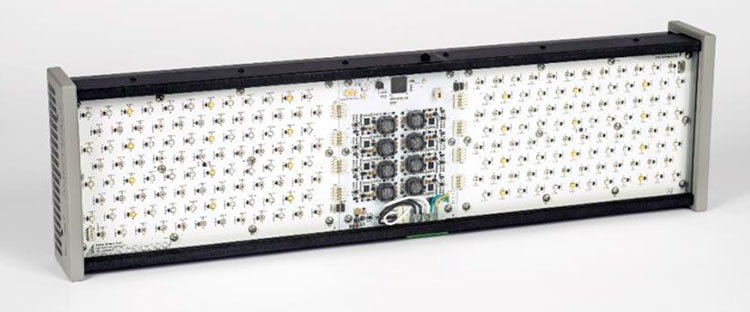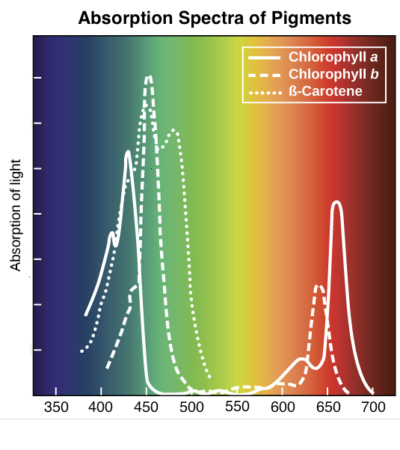One of the principal requirements for plant growth and maturity is appropriate lighting. Prior to Controlled Environment Agriculture (CEA), light was provided solely by the sun. Crop requirements, environments and economic constraints dictate spectral content and intensity needs. The task of providing required lighting is even more complex because many plants require a significantly different spectrum of light for maturation or flowering versus that which is optimal for basic metabolic growth. High-pressure sodium, Metal Hydride, fluorescent and incandescent lights simply cannot provide this required shift in spectral content. However, LED lights can provide this diversity, but it takes more than just the LEDs. The ability to adjust the spectral content, intensity, and schedule(s) of illumination, as well as provide DC or Pulse Width Modulation (PWM) modes of operation, requires not only a sophisticated LED light, but the intervention of software control. Agile Spectrum Control Software combined with Agile Spectrum LED Grow lights provides the most advanced grow lighting system on the market today.
Agile Spectrum Overview
The Agile Spectrum LED Grow Light (ASGL)
The Agile Spectrum LED Grow Light (ASGL) has eight separate, individually controlled channels that allow the user to adjust the spectrum of output light to virtually any specific spectrum required. In addition to these multiple channels, the lights can be run in either a DC mode (DC) or a pulse width modulated (PWM) mode. In the latter mode, the frequency of modulation is fully adjustable from one to well over 2000 hertz and from 0 to 100% duty cycle. It also provides a very low profile, passive cooling, manual or remote operation and an ePAR 300 micromoles per second squared (umol-m.2s1). Both of our models are being used by Rutgers University researchers at the prestigious Waksman Institute of Microbiology and the Department of Environmental Engineering. The ASGL is designed to provide illumination beyond the standard PAR spectrum due to numerous research studies indicating photosynthesis and plant morphology occurs in the spectrum beyond the standard 400 to 700nm definition of PAR [McCree, 1972]. This variability, versatility and spectral range allows researchers and growers to determine and provide the most efficient light program/recipe which will reduce energy costs while maintaining optimal growth conditions for their plants.


Much research has been carried out focused on the effects of RED and BLUE wavelength light on photosynthesis, often dismissing the impact of middle spectrum frequencies. One might assume that the middle spectrum frequencies are not needed based on the GREEN color of most plants. This assumption is false, due primarily to the photopic sensitivity of the human eye (see graph), in which peak receptivity occurs around 555nm (between GREEN and YELLOW). As a result, we see more of those wavelengths (colors) reflected back to our eyes than all others [Snowden, 2015]. It is likely that plants have more effective receptors of light in and around this wavelength.
In the recent past, typical indoor plant growth operations and supplemental growth lighting requirements have used metal halide or high pressure sodium vapor lights in an attempt to mimic or replace the solar spectrum. While full sun is not needed for optimal growth, many of its component frequencies are needed to induce photosynthesis at critical stages of plant or crop development. The ASLEDGL can be programed to provide critical time-based light recipes at key stages of plant development. Agile Spectrum lights facilitate R&D and crop recipe development, thus increasing ROI for indoor growth facilities.
Agile Spectrum LED Grow Light Research
Ongoing research is being carried out on the efficiency of photosynthesis involving intermittent illumination of plants. In addition to direct current (DC) mode of operation, these lights provide intermittent illumination of one or more independently controlled channels. By reducing the green-yellow wavelengths of light, our lights reduce unnecessary illumination costs, as well as associated cooling costs, by eliminating the heat of illumination that is not required.
Agile Spectrum LED Grow Lights can be programmed to simulate sunrise and sunset (diurnal) swings, as well as seasonal changes in the solar spectrum, thus supporting plant metabolic needs normally provided by seasonal environmental changes.

Agile Spectrum Products
ASGL80-GEN1
ASGL192-GEN2
Agile Spectrum Light Control Software
The Agile Spectrum® LED Grow Light Control Software provides the control for each of the eight independent channels in our lights. This allows the user to adjust the spectrum and intensity of light output to virtually any specific spectral content required. Additionally, this software allows the user to set schedules to support the specific needs of various plants.
Agile Spectrum Software consists of the following panels:
-
-
-
-
-
-
- Lights
- Groups
- Manage Groups
- Schedules
- Adjust Intensities (Schedules)
-
-
-
-
-




